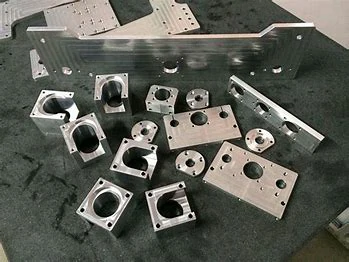Reasons for Using High-Speed Machining Centers for Mold Processing
In recent years, the use of high-speed machining centers for mold processing has gained significant popularity in the manufacturing industry. These advanced machines have revolutionized the way molds are produced, offering several key advantages over traditional machining methods. In this article, we will explore the reasons why high-speed machining centers are preferred for mold processing.
First and foremost, high-speed machining centers offer unparalleled precision. The ability to achieve tight tolerances and intricate designs is crucial in mold production, as even the smallest deviation can result in defective parts. High-speed machining centers utilize state-of-the-art technology, including advanced control systems and high-resolution sensors, to ensure precise and accurate cuts. This level of precision not only enhances the quality of the finished mold but also reduces the need for post-processing and manual adjustments, saving time and labor costs.
Another compelling reason to use high-speed machining centers for mold processing is their exceptional speed and efficiency. Traditional machining methods often involve slow and time-consuming processes, such as manual tool changes and multiple setups. In contrast, high-speed machining centers leverage automated tool changers and multi-axis capabilities to streamline the production process. This allows for continuous and uninterrupted operation, significantly reducing cycle times and increasing productivity. As a result, manufacturers can meet tight deadlines and fulfill large orders more efficiently.
Furthermore, high-speed machining centers offer improved surface finish and superior surface integrity. The high spindle speeds and optimized cutting strategies employed by these machines result in smoother and more refined mold surfaces. This is especially critical when producing molds for plastic injection or die casting, as any imperfections on the mold surface can transfer to the final product. By using high-speed machining centers, manufacturers can achieve flawless finishes, ensuring the quality and aesthetics of the molded parts.
Cost savings is another compelling factor driving the adoption of high-speed machining centers for mold processing. While these machines may have higher upfront costs compared to conventional machining equipment, the long-term benefits outweigh the initial investment. The increased productivity and reduced cycle times provided by high-speed machining centers translate into lower production costs per part. Additionally, the precision and efficiency of these machines minimize material waste and the need for rework, further reducing expenses. Over time, these cost savings contribute to improved profitability and competitive advantage for manufacturers.
Finally, high-speed machining centers enable complex mold designs and rapid prototyping. With the ability to precisely machine intricate features and complex geometries, designers can push the boundaries of mold production. This flexibility and versatility make high-speed machining centers ideal for developing prototypes and exploring innovative design concepts. By quickly iterating and testing different mold iterations, manufacturers can accelerate product development cycles and bring new products to market faster.
In conclusion, the use of high-speed machining centers for mold processing offers numerous advantages over traditional machining methods. From exceptional precision and speed to improved surface finish and cost savings, these advanced machines have revolutionized the manufacturing industry. As technology continues to advance, we can expect high-speed machining centers to play an even more significant role in mold production, driving innovation and efficiency in the manufacturing sector.
.webp)



